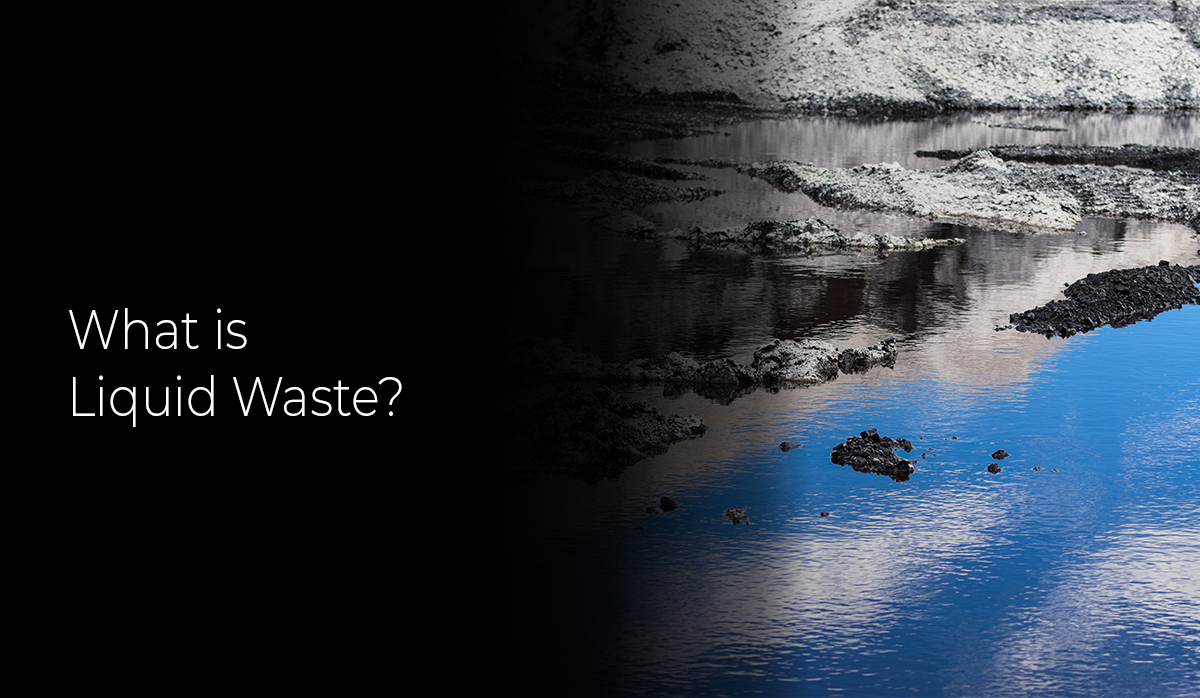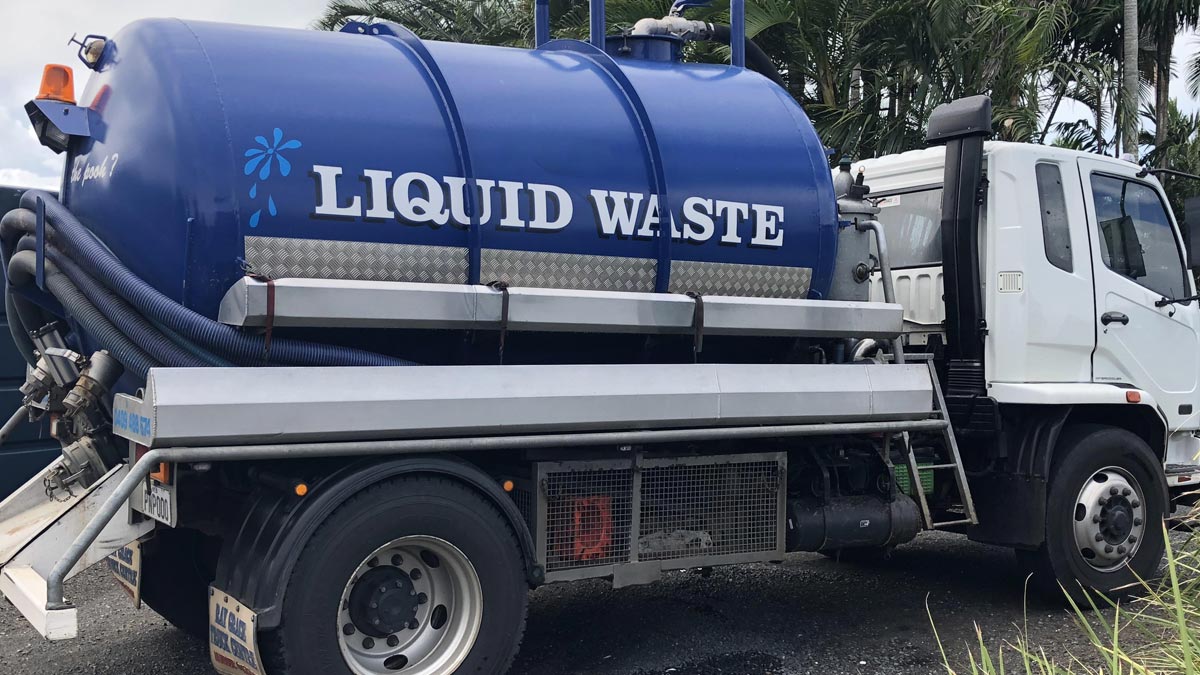Safe and Sustainable Liquid Waste Disposal: Your Go-To Service Provider
Safe and Sustainable Liquid Waste Disposal: Your Go-To Service Provider
Blog Article
Exactly How Liquid Waste Disposal Functions: An In-depth Introduction of Methods and Technologies Employed

Summary of Liquid Waste Types
The intricacy of fluid waste kinds requires a thorough understanding of their characteristics and implications for disposal. Liquid waste can broadly be classified right into numerous kinds, including industrial, community, agricultural, and dangerous waste. Each category exhibits distinctive residential or commercial properties, requiring specific management strategies to minimize ecological and wellness dangers.
Industrial fluid waste originates from manufacturing procedures and usually has a variety of pollutants, such as heavy steels, solvents, and natural compounds. Municipal fluid waste, mainly comprising wastewater from houses and industrial establishments, contains raw material, nutrients, and microorganisms (industrial wastewater treatment). Agricultural fluid waste, consisting of drainage from ranches, may consist of plant foods, chemicals, and pet waste, presenting threats to water high quality and communities
Unsafe fluid waste is characterized by its poisoning, reactivity, or possible to cause injury. This classification consists of compounds like acids, bases, and particular chemicals that require stringent handling and disposal procedures. Understanding these varied liquid waste types is essential for creating effective disposal approaches and guaranteeing conformity with environmental guidelines. Proper classification and characterization are essential for carrying out appropriate treatment strategies and minimizing the negative influence on public health and wellness and the setting.
Physical Therapy Methods

Testing is the first action, where larger bits and debris are removed from the liquid waste using displays or grates. This procedure secures downstream devices from damage and guarantees smoother operation. Following testing, sedimentation makes use of gravitational force to separate solids from fluids. In sedimentation containers, much heavier bits work out at the base, developing a sludge layer, while the clarified fluid can be more dealt with.
Purification is one more important method that entails passing the liquid via permeable materials, such as sand or membrane layers, to catch smaller fragments. This step boosts the high quality of the liquid, making it ideal for subsequent treatment procedures.

Chemical Treatment Strategies
Chemical treatment strategies are necessary for efficiently taking care of liquid waste, particularly in resolving dissolved and colloidal impurities that physical methods might not properly get rid of. These techniques utilize different chemical agents to reduce the effects of, speed up, or transform unsafe substances into much less hazardous kinds.
One common technique is coagulation and flocculation, where chemicals such as alum or ferric chloride are included to advertise the aggregation of suspended fragments. This process improves sedimentation, permitting easier removal of the resulting sludge. Furthermore, oxidation procedures, employing agents like chlorine or ozone, are utilized to damage down intricate organic compounds and microorganisms, providing the waste more secure for discharge or further treatment.
Neutralization is one more essential technique, which adjusts the pH of acidic or alkaline waste streams to neutral levels, protecting against potential harm to downstream systems and the atmosphere. Moreover, progressed oxidation procedures (AOPs) utilize combinations of oxidants and ultraviolet light to weaken persistent contaminants, attaining a higher level of therapy efficiency.
Biological Therapy Processes
Biological therapy processes play a critical function in the monitoring of liquid waste by utilizing microbes to decompose raw material and reduce pollutant degrees. These processes can be extensively classified right into cardio and anaerobic treatments, each using details microbial areas to achieve effective waste degradation.
Cardio therapy involves making use find out this here of oxygen to promote the failure of natural materials by germs. This process is typically executed in activated sludge systems, where aeration containers give a helpful atmosphere for microbial growth, leading to the oxidation of natural toxins. The resultant biomass can be divided from dealt with effluent through sedimentation.
In contrast, anaerobic therapy occurs in the absence of oxygen, depending on different microorganisms to damage down raw material. This technique is especially advantageous for high-strength waste, as it produces biogas, a renewable resource source, while minimizing sludge production. Technologies such as anaerobic digesters are regularly employed in metropolitan and industrial applications.
Both anaerobic and cardiovascular biological therapies not just reduce the ecological effect of fluid waste but also assist in source recuperation, making them important parts of sustainable waste management techniques. Their efficiency, adaptability, and efficiency support their prevalent application across numerous fields.
Arising Technologies in Disposal
Cutting-edge techniques to fluid garbage disposal are swiftly progressing, driven by innovations in technology and a boosting emphasis on sustainability. Amongst these emerging technologies, membrane layer bioreactors (MBRs) have actually acquired grip for their capacity to incorporate biological therapy with membrane layer filtering, causing premium effluent that can be recycled in various applications. MBRs enable smaller footprints and my review here more effective procedures compared to standard systems.
An additional appealing advancement is using anaerobic food digestion integrated with nutrient recuperation modern technologies, which not only treats liquid waste but likewise creates biogas and recoups important nutrients like nitrogen and phosphorus. This twin benefit enhances source performance and reduces ecological impact.
In addition, progressed oxidation procedures (AOPs) are being adopted for the deterioration of complex organic pollutants. These techniques utilize effective oxidants and drivers to break down contaminants at the molecular level, using a highly effective remedy for difficult waste streams.
Moreover, the assimilation of expert system and equipment discovering in waste management systems is optimizing operational efficiency and predictive maintenance, leading to lowered expenses and improved ecological conformity. These technologies reflect a substantial shift in the direction of even more reliable and sustainable liquid waste disposal methods.
Verdict
In final thought, reliable fluid waste disposal demands a comprehensive understanding of numerous strategies and modern technologies. By constantly advancing these approaches, it comes to be feasible to deal with the expanding challenges connected with fluid waste, inevitably contributing to environmental defense and resource recovery.
Liquid waste disposal is a critical aspect of environmental More hints administration, needing a thorough understanding of various techniques and technologies tailored to different waste types. Liquid waste can extensively be categorized into a number of kinds, consisting of commercial, local, farming, and harmful waste. Agricultural fluid waste, consisting of overflow from ranches, might consist of plant foods, chemicals, and pet waste, presenting dangers to water high quality and ecological communities.
Different physical therapy techniques play an important duty in handling liquid waste efficiently - industrial wastewater treatment.In final thought, effective liquid waste disposal demands a thorough understanding of numerous methods and innovations
Report this page